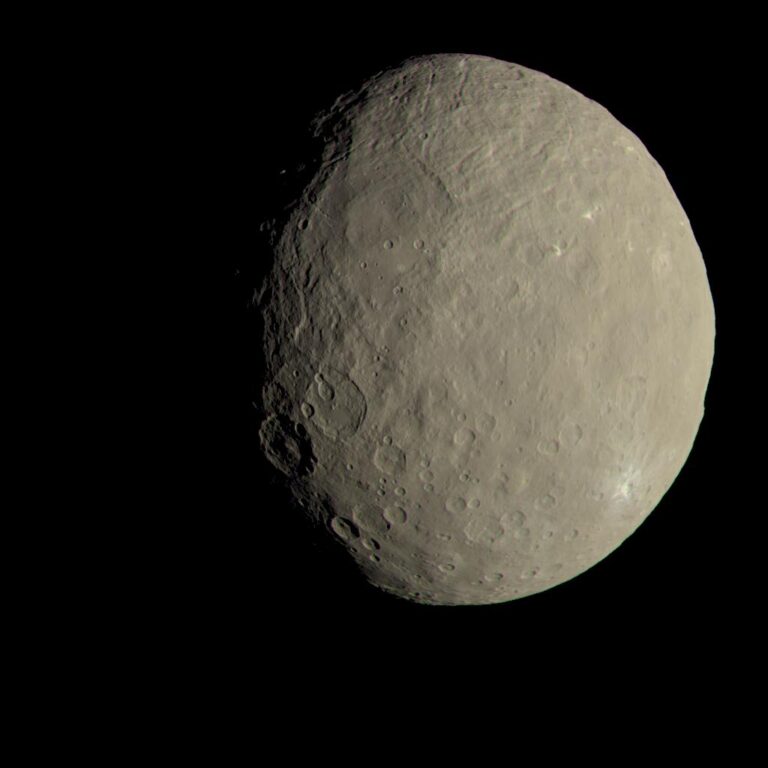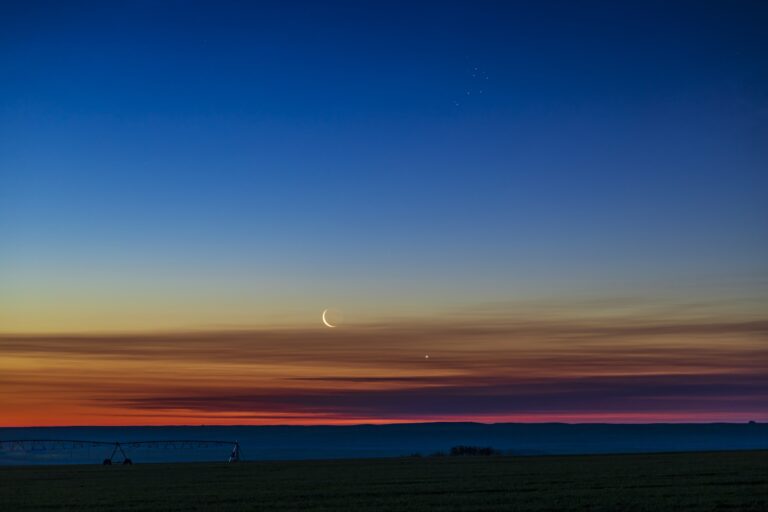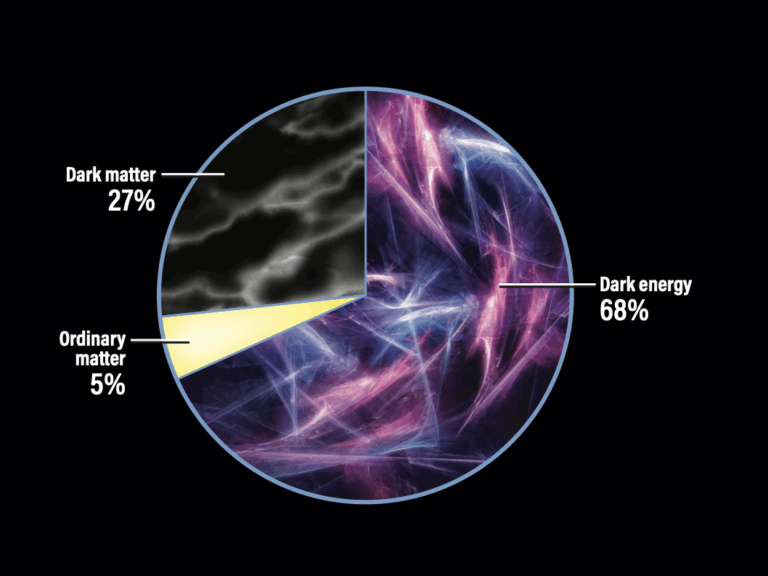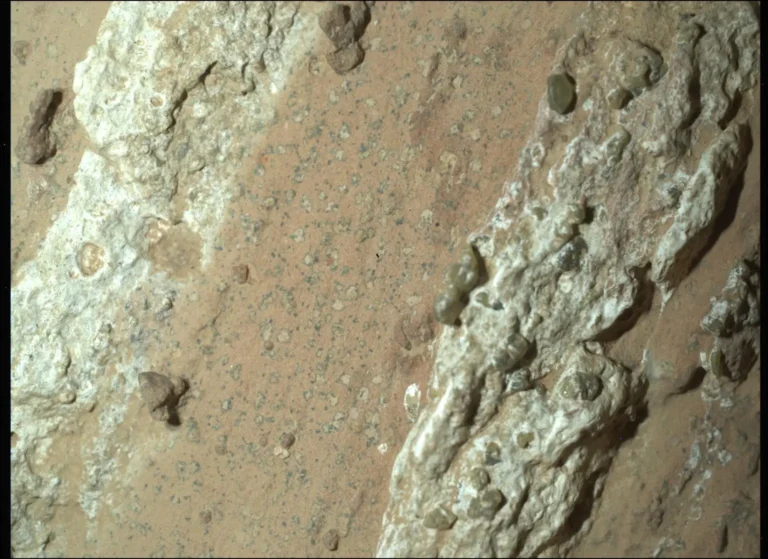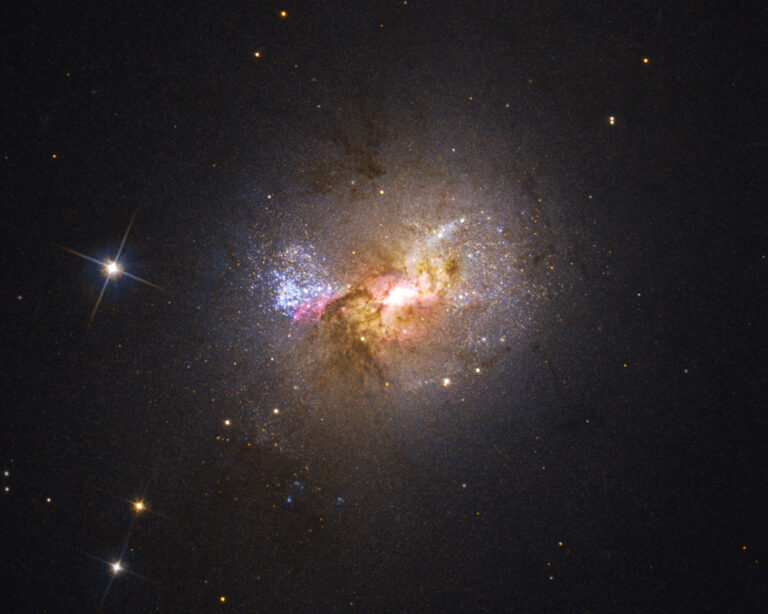Key Takeaways:
Aging bright stars in the cluster glow in intense shades of red and blue. The majority of middle-aged stars, several billions of years old, are whitish in color. Myriad distant background galaxies of varying shapes and structure are scattered around the image.
The most intriguing object, however, doesn’t seem to belong in the cluster. It is a faint green bubble in the white box near the bottom center of the image. This so-called planetary nebula is the aftermath of the death of a star. The burned-out central star can be seen inside the bubble. It is uncertain whether the planetary nebula is a member of NGC 1846 or simply lies along the line of sight to the cluster. Measurements of the motion of the cluster stars and the planetary nebula’s central star suggest it might be a cluster member.
Aging bright stars in the cluster glow in intense shades of red and blue. The majority of middle-aged stars, several billions of years old, are whitish in color. Myriad distant background galaxies of varying shapes and structure are scattered around the image.
The most intriguing object, however, doesn’t seem to belong in the cluster. It is a faint green bubble in the white box near the bottom center of the image. This so-called planetary nebula is the aftermath of the death of a star. The burned-out central star can be seen inside the bubble. It is uncertain whether the planetary nebula is a member of NGC 1846 or simply lies along the line of sight to the cluster. Measurements of the motion of the cluster stars and the planetary nebula’s central star suggest it might be a cluster member.



